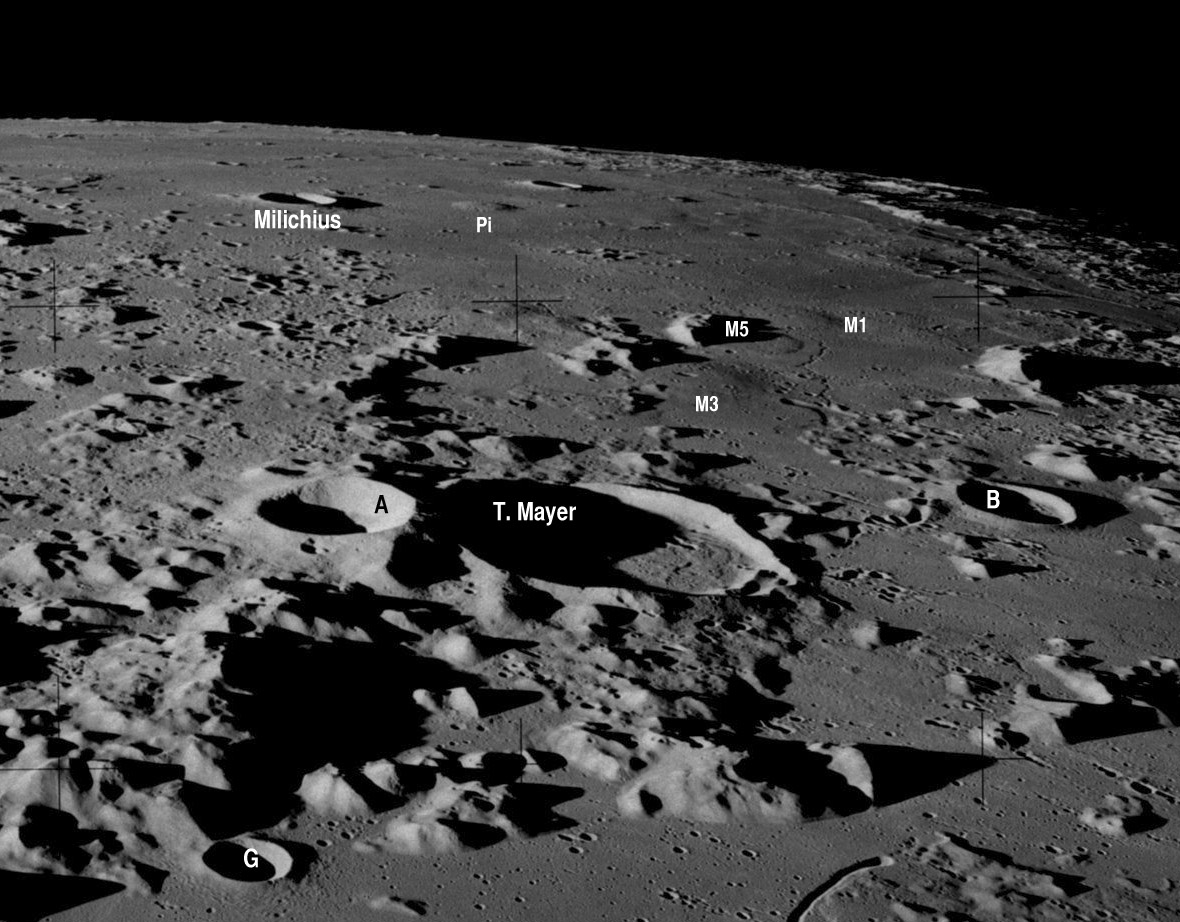Difference between revisions of "November 5, 2009"
| (4 intermediate revisions by the same user not shown) | |||
| Line 1: | Line 1: | ||
__NOTOC__ | __NOTOC__ | ||
=Oblique Domeland= | =Oblique Domeland= | ||
| + | <!-- Start of content --> | ||
<!-- ws:start:WikiTextHeadingRule:0:<h1> --> | <!-- ws:start:WikiTextHeadingRule:0:<h1> --> | ||
<!-- ws:start:WikiTextLocalImageRule:6:<img src="/file/view/LPOD-Nov5-09.jpg/100308339/LPOD-Nov5-09.jpg" alt="" title="" /> -->[[File:LPOD-Nov5-09.jpg|LPOD-Nov5-09.jpg]]<!-- ws:end:WikiTextLocalImageRule:6 --><br /> | <!-- ws:start:WikiTextLocalImageRule:6:<img src="/file/view/LPOD-Nov5-09.jpg/100308339/LPOD-Nov5-09.jpg" alt="" title="" /> -->[[File:LPOD-Nov5-09.jpg|LPOD-Nov5-09.jpg]]<!-- ws:end:WikiTextLocalImageRule:6 --><br /> | ||
| − | <em>Apollo 17 image AS17-139-21291 from [http://www.hq.nasa.gov/alsj/a17/AS17-139-21291HR.jpg | + | <em>Apollo 17 image AS17-139-21291 from [http://www.hq.nasa.gov/alsj/a17/AS17-139-21291HR.jpg Eric Jones'] [http://www.hq.nasa.gov/alsj/ Apollo 17 Image Library]</em><br /> |
<br /> | <br /> | ||
| − | New spacecraft images are always a treat, but the old ones just keep on delighting me. Thirty-seven years ago this month Apollo 17 went to the Moon and did other things, but the orbital images, especially the oblique ones such as this, continue to provide new perspectives. Normally, when we see images of lunar domes we look vertically down on the surface, seeing a plan view rather than what they look like in profile. This perspective, from over southern Imbrium looking south past the fragmentary Carpathian Mountains, shows a number of domes in the region I've called domeland. I've only labelled a few, including three in a row south of Tobias Mayer, but they illustrate some of the variation in dome morphology. The numbering scheme is from the [http://digilander.libero.it/glrgroup/images.htm | + | New spacecraft images are always a treat, but the old ones just keep on delighting me. Thirty-seven years ago this month Apollo 17 went to the Moon and did other things, but the orbital images, especially the oblique ones such as this, continue to provide new perspectives. Normally, when we see images of lunar domes we look vertically down on the surface, seeing a plan view rather than what they look like in profile. This perspective, from over southern Imbrium looking south past the fragmentary Carpathian Mountains, shows a number of domes in the region I've called domeland. I've only labelled a few, including three in a row south of Tobias Mayer, but they illustrate some of the variation in dome morphology. The numbering scheme is from the [http://digilander.libero.it/glrgroup/images.htm Consolidated Lunar Dome Catalogue] images [http://digilander.libero.it/glrgroup/images.htm page]. Dome M3 has a diameter of 15.6 km and a rimless summit collapse pit - clearly volcanic, not impact - 3 km wide. Its edges blend into the maria and the dome has a very gentle slope. M5 is flat, like a pancake, with relatively steep, but low, edges. M1 is rather like M3, including a small summit pit. Looking further towards the limb is the well known classic dome Milichius Pi. It has a more of a conical profile, with low steep edges. The Lunar Geologic Research group has studied these domes carefully, deriving the dimension I've given and many others, but I like to actually see the morphology too.<br /> |
<br /> | <br /> | ||
| − | <em>[mailto:tychocrater@yahoo.com | + | <em>[mailto:tychocrater@yahoo.com Chuck Wood]</em><br /> |
<br /> | <br /> | ||
<strong>Related Links</strong><br /> | <strong>Related Links</strong><br /> | ||
| − | Rükl plate [ | + | Rükl plate [https://the-moon.us/wiki/R%C3%BCkl_19 19]<br /> |
<br /> | <br /> | ||
| + | <p><b>Yesterday's LPOD:</b> [[November 4, 2009|Rilleroad Crossing]] </p> | ||
| + | <p><b>Tomorrow's LPOD:</b> [[November 6, 2009|New Data, New Answers, New Mysteries]] </p> | ||
<hr /> | <hr /> | ||
| + | {{wiki/ArticleFooter}} | ||
Latest revision as of 18:55, 13 October 2018
Oblique Domeland

Apollo 17 image AS17-139-21291 from Eric Jones' Apollo 17 Image Library
New spacecraft images are always a treat, but the old ones just keep on delighting me. Thirty-seven years ago this month Apollo 17 went to the Moon and did other things, but the orbital images, especially the oblique ones such as this, continue to provide new perspectives. Normally, when we see images of lunar domes we look vertically down on the surface, seeing a plan view rather than what they look like in profile. This perspective, from over southern Imbrium looking south past the fragmentary Carpathian Mountains, shows a number of domes in the region I've called domeland. I've only labelled a few, including three in a row south of Tobias Mayer, but they illustrate some of the variation in dome morphology. The numbering scheme is from the Consolidated Lunar Dome Catalogue images page. Dome M3 has a diameter of 15.6 km and a rimless summit collapse pit - clearly volcanic, not impact - 3 km wide. Its edges blend into the maria and the dome has a very gentle slope. M5 is flat, like a pancake, with relatively steep, but low, edges. M1 is rather like M3, including a small summit pit. Looking further towards the limb is the well known classic dome Milichius Pi. It has a more of a conical profile, with low steep edges. The Lunar Geologic Research group has studied these domes carefully, deriving the dimension I've given and many others, but I like to actually see the morphology too.
Chuck Wood
Related Links
Rükl plate 19
Yesterday's LPOD: Rilleroad Crossing
Tomorrow's LPOD: New Data, New Answers, New Mysteries
COMMENTS?
Register, Log in, and join in the comments.



